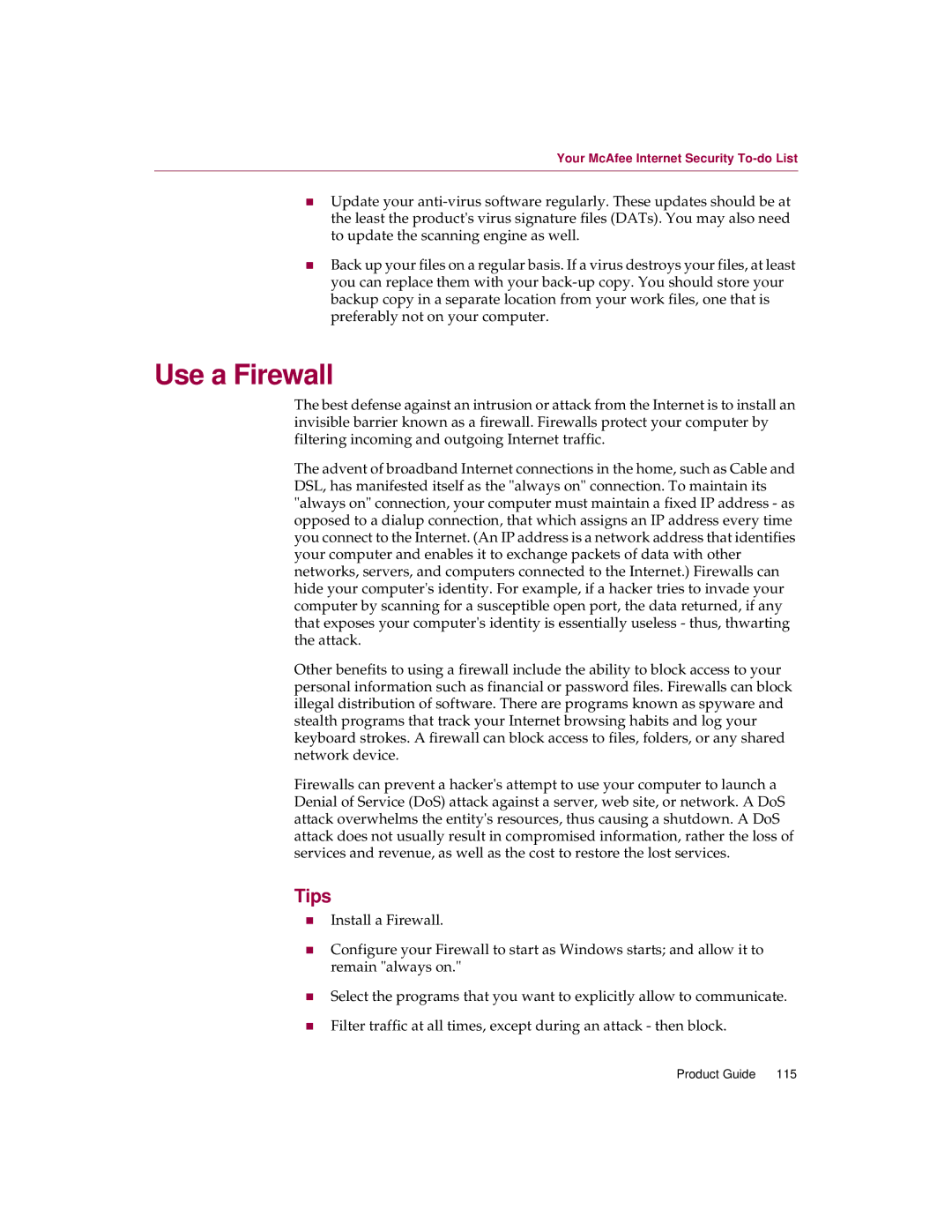Your McAfee Internet Security To-do List
nUpdate your
nBack up your files on a regular basis. If a virus destroys your files, at least you can replace them with your
Use a Firewall
The best defense against an intrusion or attack from the Internet is to install an invisible barrier known as a firewall. Firewalls protect your computer by filtering incoming and outgoing Internet traffic.
The advent of broadband Internet connections in the home, such as Cable and DSL, has manifested itself as the "always on" connection. To maintain its "always on" connection, your computer must maintain a fixed IP address - as opposed to a dialup connection, that which assigns an IP address every time you connect to the Internet. (An IP address is a network address that identifies your computer and enables it to exchange packets of data with other networks, servers, and computers connected to the Internet.) Firewalls can hide your computer's identity. For example, if a hacker tries to invade your computer by scanning for a susceptible open port, the data returned, if any that exposes your computer's identity is essentially useless - thus, thwarting the attack.
Other benefits to using a firewall include the ability to block access to your personal information such as financial or password files. Firewalls can block illegal distribution of software. There are programs known as spyware and stealth programs that track your Internet browsing habits and log your keyboard strokes. A firewall can block access to files, folders, or any shared network device.
Firewalls can prevent a hacker's attempt to use your computer to launch a Denial of Service (DoS) attack against a server, web site, or network. A DoS attack overwhelms the entity's resources, thus causing a shutdown. A DoS attack does not usually result in compromised information, rather the loss of services and revenue, as well as the cost to restore the lost services.
Tips
nInstall a Firewall.
nConfigure your Firewall to start as Windows starts; and allow it to remain "always on."
nSelect the programs that you want to explicitly allow to communicate.
nFilter traffic at all times, except during an attack - then block.
Product Guide 115
